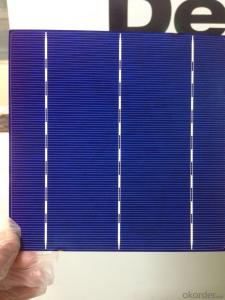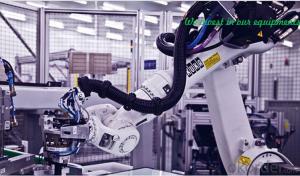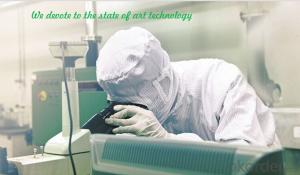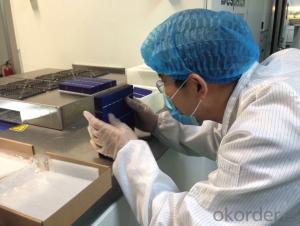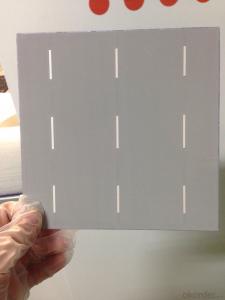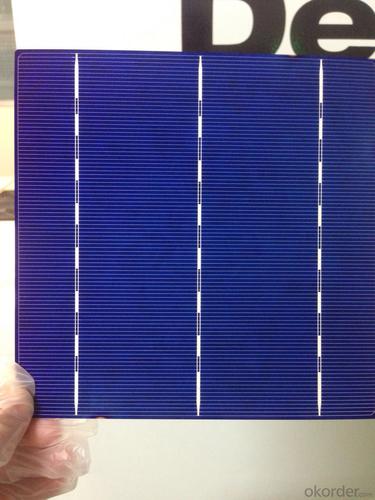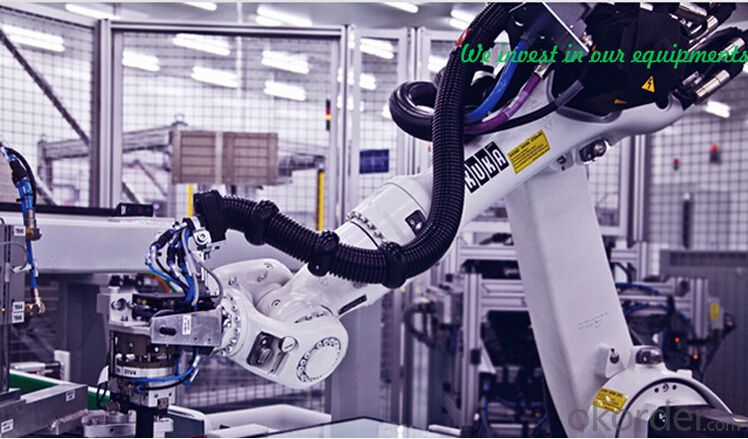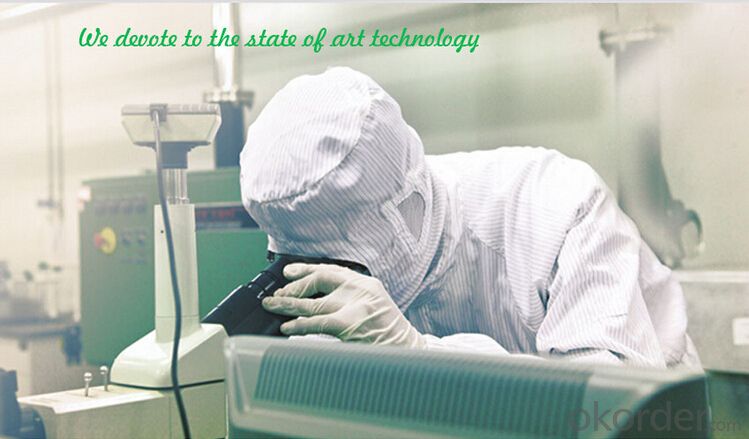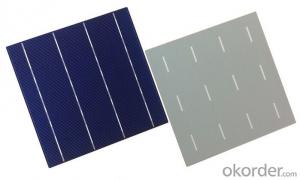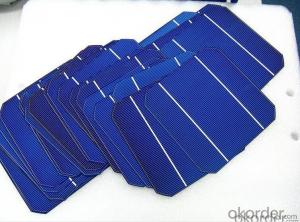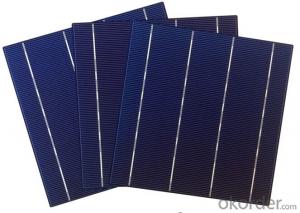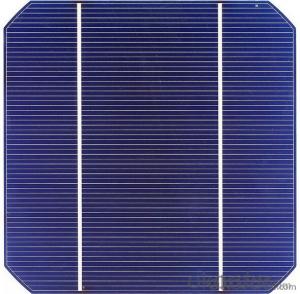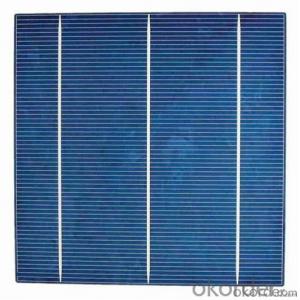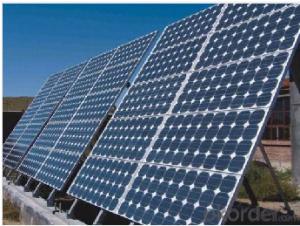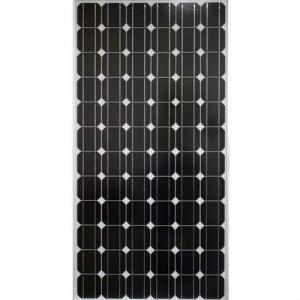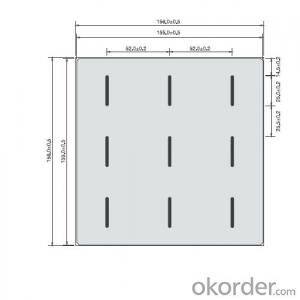Terrestrial Solar Cells - Low Efficiency and Low Power Solar Cells 3bb 17.2%
- Loading Port:
- Shanghai
- Payment Terms:
- TT OR LC
- Min Order Qty:
- 20000 pc
- Supply Capability:
- 2000000 pc/month
OKorder Service Pledge
OKorder Financial Service
You Might Also Like
Specification
Advantages of Poly Solar Cells
1. High efficiency and High power.
2. Long-term electrical stability.
3. Lowest price and Fastest delivery.
4. Good quality and good service.
5. Bulk supply
6. Good Warranty
7. Big Sale
8. More than 25 years on the lifetime.
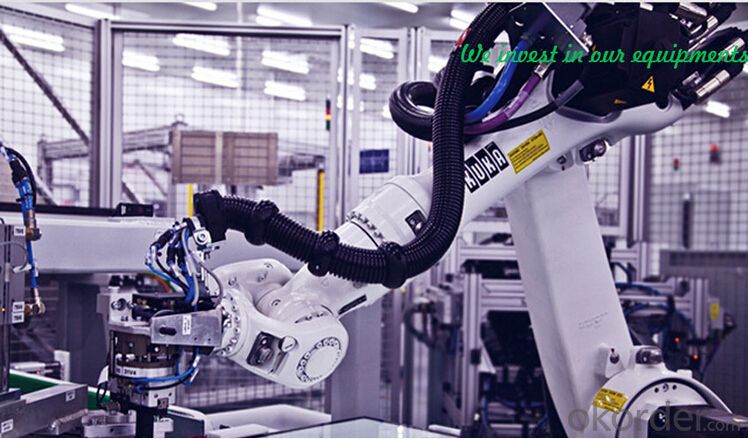
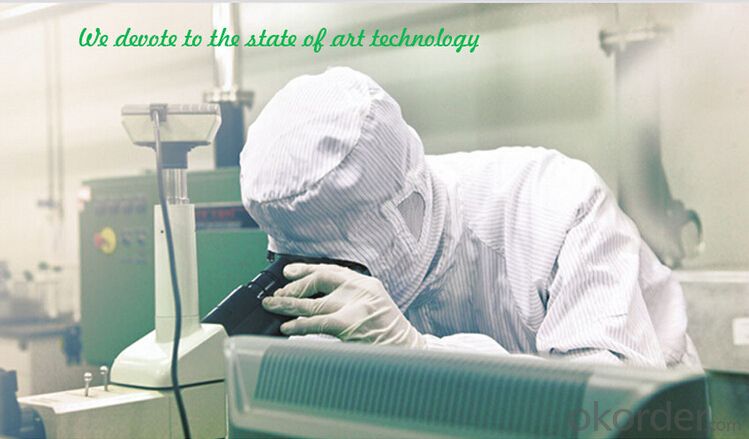
Temperature Coefficient of Monocrystalline Cells
Voc.Temp .coef.%/K:-0.351%/K
Isc.Temp .coef.%/K : +0.035%/K
Pm.Temp. coef.%/K: -0.47%/K
Visual Quality
CNBM Solar sorts cells into four blue color classes and clearly labels them on packaging and shipping documents.
Color uniformity within cells are closely monitored and controlled.
Gives modules a high quality look and feel.
CNBM Solar sets high visual quality standards, screening more than 25 visual criteria.
Performance in High Temperature
CNBM Solar cells produce optimal power output even in high temperature conditions.
Temperature coefficients average 0.1% per °C lower than the competition. This means 3% less power degradation when cell surface temperature increases from 25°C to 55°C.
Performance in Low Light
CNBM Solar Cells perform exceptionally well even in low light.
CNBM Solar A-grade and B-grade cells are screened for shunt resistance.
Higher shunt resistance can result in up to 10% higher annual energy yield for PV systems.
Low Reverse Current
CNBM Solar cells feature low reverse current at both -10V or -12V.
Reduces hot spot risk for long-term reliability.
Environmental Compliance
CNBM Solar cells are developed with environmental protection in mind.
All cells are RoHS compliant.
REACH-SVHC compliance ensures safe entry into the European market.
RoHS compliance: safe limits of Pb and no Cd found.
Usage and Applications of Polycrystalline Cells
Solar cells are often electrically connected and encapsulated as a module. Photovoltaic modules often have a sheet of glass on the front (sun up) side, allowing light to pass while protecting the semiconductor wafers from abrasion and impact due to wind-driven debris, rain, hail, etc. Our Cells can greatly improve the performance of Solar Modules.
Packaging & Delivery of Polycrystalline Cells
Carton Box Package and Deliver by air. It should be noticed that it should be avoid water, sunshine and moist.
FAQ:WHAT'S THE ADVANTAGES OF CNBM?
1.CNBM is a state-owned company under jurisdiction of central goverment , one of Fortune 500 .Just because of this ,we can get more support and resources from our government.So ,it is realiable .
2.CNBM's solar products are high-qualified with TUV,UL,VDE,CE,ISO certificates. Our products ranges top in China.
3.Just as I mentioned in attahment ,we signed 500MW project with Urkan under the witness of our chairman Xi Jinping ,CNBM has ability to meet your large quantity needs,Our annual capacity is 1GW.
FAQ: How many kinds of solar cells can we produce?
•: We can supply the normal 2 kinds of solar cells, Poly 156mm*156mm and Mono125mm*125mm , and the special demension also can be produced .
FAQ:What's the effeciency range of the solar cells?
•: We can supply 16.8% to 18.9% effeciency of the solar cells.
Cell-To-Module Performance (CTM)
1.CNBM Solar improves cell-to-module ratio by:
2.Narrowing down efficiency bin range to 0.2%.
3.Defining efficiency bins by minimal power and 97% of current at maximum power.
4.Customers can manage and control module power output distribution.
5.Customers get more value for their money.
6.Long-Term Reliability
7.High Shunt Resistance
8.Low LID (Light-Induced Degradation)
9.Frequent internal monitoring of LID.
- Q: How do solar cells impact greenhouse gas emissions?
- Solar cells have a significant positive impact on greenhouse gas emissions as they generate electricity from the sun's energy without producing any harmful greenhouse gases. By replacing fossil fuel-based energy sources, solar cells help reduce carbon dioxide and other greenhouse gas emissions, mitigating climate change and contributing to a cleaner and sustainable future.
- Q: How do solar cells perform in urban environments?
- Solar cells can perform well in urban environments, although their efficiency may be slightly reduced compared to more ideal conditions. The presence of tall buildings and shadows can partially block sunlight, affecting the overall energy output. However, advancements in solar technology, such as the use of bifacial panels and improved tracking systems, can help mitigate these challenges by capturing light from multiple angles and adapting to changing conditions. Moreover, the increasing installation of solar panels on rooftops, facades, and other urban structures is significantly contributing to the adoption of renewable energy in cities.
- Q: What is the impact of tree shading on solar cell performance?
- Tree shading has a significant negative impact on solar cell performance as it reduces the amount of sunlight reaching the cells, thereby reducing the overall energy output. Shading blocks direct sunlight and creates uneven distribution of light, resulting in decreased efficiency and potentially even causing parts of the cells to operate in reverse, leading to further energy loss. It is crucial to plan solar installations carefully, considering tree growth and shading patterns, to maximize solar cell performance.
- Q: Can solar cells be used for powering submarines?
- Yes, solar cells can be used for powering submarines to some extent. However, due to limitations in surface area and the amount of sunlight that can penetrate the water, solar power alone is not sufficient to power submarines for long durations or at great depths. Submarines typically rely on a combination of diesel-electric engines and rechargeable batteries for propulsion and power generation.
- Q: How do solar cells perform in dusty environments?
- Solar cells can experience a decrease in performance in dusty environments as dust particles can block sunlight from reaching the surface of the cells, reducing their efficiency. Regular cleaning and maintenance are necessary to ensure optimal performance in such conditions.
- Q: Can solar cells be used for powering navigation buoys?
- Yes, solar cells can be used for powering navigation buoys. Solar cells are a reliable and sustainable source of energy that can generate electricity from sunlight, making them ideal for remote locations such as navigation buoys. They can effectively power the lighting and other electrical systems on the buoys, eliminating the need for traditional power sources and reducing maintenance costs.
- Q: Can solar cells be used in water pumps?
- Yes, solar cells can be used in water pumps. Solar-powered water pumps are designed to convert sunlight into electricity, which can be used to power the pump and move water. This technology is particularly useful in areas with limited access to electricity or where grid power is unreliable. Solar-powered water pumps are efficient, environmentally friendly, and provide a sustainable solution for water pumping needs.
- Q: How are solar cells used in calculators?
- Solar cells are used in calculators to convert sunlight into electrical energy, which powers the device and allows it to function without the need for batteries or external power sources.
- Q: Can solar cells be used in theme parks?
- Yes, solar cells can be used in theme parks. Solar panels can be installed in theme parks to generate electricity from sunlight, which can be used to power various attractions, lighting, and other electrical needs within the park. This not only helps reduce the environmental impact of the park but also provides a sustainable and cost-effective energy solution.
- Q: Can solar cells be used in airports?
- Yes, solar cells can be used in airports. In fact, many airports around the world have already started using solar panels to generate clean and renewable energy. These solar cells are typically installed on rooftops, canopies, or open areas near the airport to harness sunlight and convert it into electricity. This helps airports reduce their carbon footprint, lower energy costs, and contribute towards sustainability goals.
Send your message to us
Terrestrial Solar Cells - Low Efficiency and Low Power Solar Cells 3bb 17.2%
- Loading Port:
- Shanghai
- Payment Terms:
- TT OR LC
- Min Order Qty:
- 20000 pc
- Supply Capability:
- 2000000 pc/month
OKorder Service Pledge
OKorder Financial Service
Similar products
Hot products
Hot Searches
Related keywords
